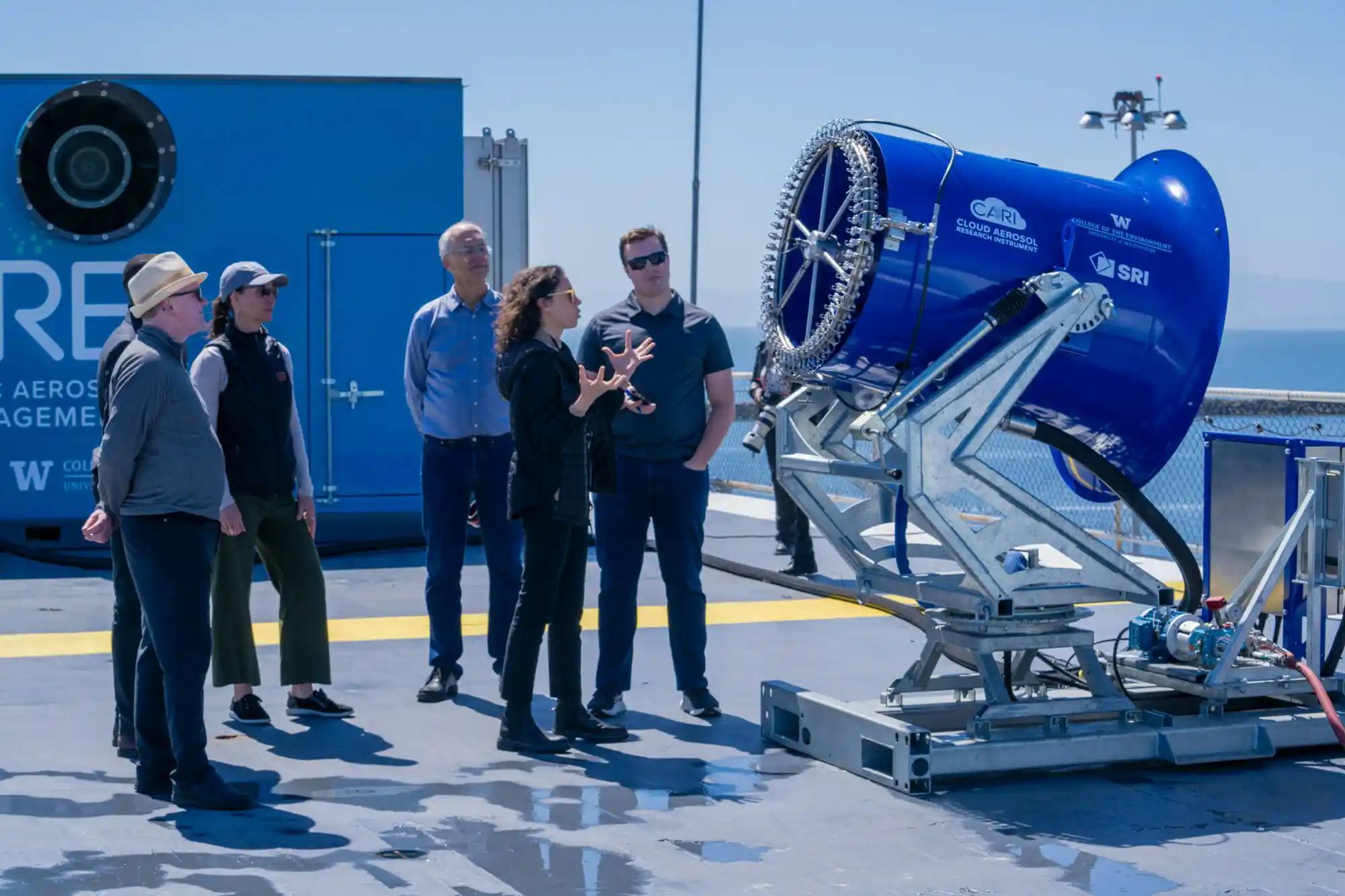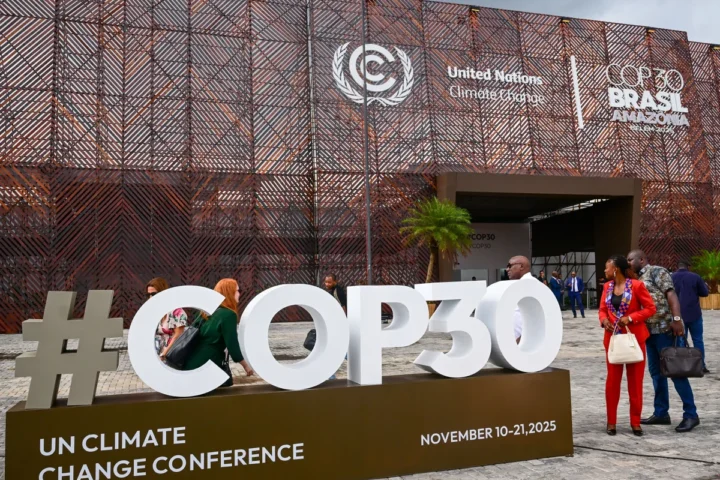Silicon Valley likes to move fast and break things. But what happens when the things at stake are not social networks or taxi markets, but the global climate system itself?
That question became far less abstract this week after Israeli–U.S. startup Stardust Solutions announced it had raised $60 million, the largest-ever fundraising round for any company aiming to cool the planet by spraying reflective particles into the atmosphere. Once relegated to sci-fi, the concept—solar geoengineering—now sits squarely in the domain of venture capital. And that should give us pause.
Stardust’s latest funding round reads like a who’s who of high-profile tech money: Lowercarbon Capital, led by billionaire investor Chris Sacca; Exor Ventures, the investment arm of the Agnelli industrial dynasty; former Facebook executive Matt Cohler; and firms from San Francisco to Berlin. The company has now raised $75 million since its founding just two years ago.
For its backers, the pitch is seductive: a “safe and controlled” way to reflect sunlight back into space—similar to how volcanic eruptions cool global temperatures temporarily. For its critics, the move is a flashing red warning light. Solar geoengineering is thinly researched, largely unregulated, and could, in the worst-case scenario, provoke geopolitical tensions over who controls the global thermostat. Yet here it is, being treated like just another climate-tech moonshot.
The Valley’s New Frontier: Climate as a Platform
Stardust’s CEO, Yanai Yedvab, a former Israeli government nuclear physicist, frames the investment as a responsible step forward in developing a potential last line of defense against runaway global warming. With political climate action stalled worldwide and temperatures shattering records year after year, investors appear ready to accept the logic of emergency measures.
From the perspective of Silicon Valley venture capital, solar geoengineering looks like a classic asymmetric bet: If the technology works and governments adopt it at scale, Stardust could become the Lockheed Martin of climate intervention. If it fails, the losses are just another entry in the long ledger of speculative tech investments.
But as Columbia Business School economist Gernot Wagner points out, this logic collapses under real-world scrutiny. He calls the funding “unreasonable” and doubts any government will spend billions acquiring intellectual property that effectively lets one company throttle planetary temperatures. Even proponents of geoengineering research hesitate at the idea of a private company holding the keys to the global climate.
The concern is not just about one startup’s ambitions—it’s about VCs treating geoengineering like software. You cannot run fast and break monsoons. You cannot A/B test the hydrological cycle.
A Technology With Global Consequences—and No Global Rules
Solar geoengineering occupies one of the murkiest corners of climate science. While the idea of dispersing reflective particles in the stratosphere has been studied for decades, the real-world risks remain enormous. Modifying sunlight could disrupt rainfall patterns, shift storm tracks, or alter regional climates in unpredictable ways. A cooling program initiated unilaterally by one country—or one company—could provoke geopolitical conflict.
There is no international regulatory framework governing solar geoengineering research or deployment. That vacuum means Stardust is operating in “ask forgiveness, not permission” territory—a mantra that may work in tech but not in atmospheric physics.
The company insists its engineered particles are safe, inert, ozone-friendly, and unable to accumulate in ecosystems. It is preparing patents and academic papers, and says it will conduct “contained” high-altitude experiments as soon as April. In these tests, a modified aircraft would capture stratospheric air and expose it to Stardust’s reflective powder—without releasing the particles widely.
It’s a clever approach, sidestepping the public backlash that could erupt from any open-air experiment. Yet it also highlights a deeper issue: Companies are defining the boundaries of what is acceptable in a domain that affects every country and every person on Earth.
Why Investors Are Piling In
The surge of funding is impossible to separate from political paralysis. Despite decades of warnings, global dependence on oil, gas, and coal remains stubbornly high. Emission cuts are far too slow to ward off dangerous warming. In that bleak context, geoengineering becomes a tempting “Plan B”—a technological patch to manage symptoms rather than causes.
Furthermore, the financial logic is straightforward: if governments decide they need solar geoengineering—even as a temporary measure—contracts could be massive and long-lasting. Yedvab makes clear the company is positioning itself for exactly that scenario.
But this raises the uncomfortable question: Should a technology with civilization-scale risks be shepherded by private capital seeking outsized returns?
The Geoengineering Governance Gap
The deeper problem is structural. We lack a coherent framework to manage technologies that straddle public good and global risk. As a result, private actors are rushing into the void, much as they did with cryptocurrency, social media, or artificial intelligence—only this time the stakes aren’t financial markets or privacy norms but planetary climate stability.
Stardust assures investors that it is taking a “cautious approach.” And perhaps it is. But caution in a sector this consequential cannot be defined by one company’s internal risk thresholds. It must be defined through transparent, democratic, international governance.
Without it, geoengineering risks becoming yet another domain where private interests race ahead of public oversight. And unlike with digital platforms, rollback may not be possible.
The Path Forward: Research, Yes. Privatization, No.
The uncomfortable truth is that research into solar geoengineering may indeed be necessary. The world is failing to cut emissions at the speed science demands. Exploring all options—including controversial ones—makes sense.
But pushing this research forward through for-profit startups backed by venture capital is an inherently dangerous model. It concentrates power, creates perverse incentives, and narrows public debate around a technology that affects the entire planet.
A far better approach would be publicly funded, transparently governed, internationally coordinated research—one where no single company or investor can steer outcomes.
Stardust’s $60 million raise signals that solar geoengineering has entered the mainstream of climate tech. But that milestone should not be cause for celebration. It should be a wake-up call.
Because some technologies are simply too consequential to be shaped by the logic of the market. And the Earth’s thermostat is one of them.











